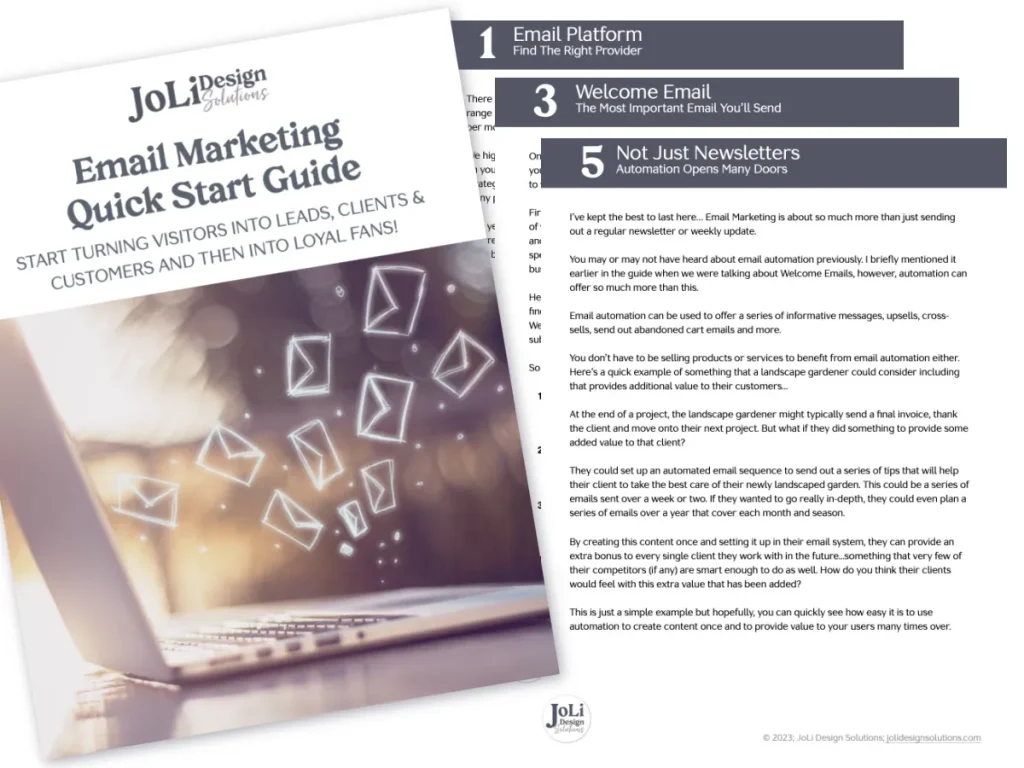You’ve built a successful coaching or consulting business through sheer expertise and determination. Your clients get incredible results, your referrals are strong, and you’re ready to scale—but your website is holding you back.
Many high-performing service professionals assume they can DIY their website design and end up with a digital presence that doesn’t match their professional caliber. The result? Potential clients bounce, conversions suffer, and growth stagnates despite having an exceptional service to offer.
After designing conversion-focused websites for coaches and consultants for over six years, I’ve seen these same costly mistakes repeated again and again. The good news? They’re completely avoidable when you know what to look for.
1. Prioritizing Pretty Over Purpose
The Mistake: Creating a visually stunning website that fails to guide visitors toward taking action.
Your website’s primary job isn’t to win design awards—it’s to convert visitors into clients. Beautiful imagery and trendy layouts mean nothing if visitors can’t figure out how you solve their problems or what to do next.
The Fix:
- Lead with your value proposition in the first 3 seconds of page load
- Include clear calls-to-action above the fold
- Design each page with a single, specific goal in mind
- Test your navigation with fresh eyes—can a stranger find your services in under 10 seconds?
Revenue Impact: Strategic design can increase conversion rates by 200-400%, turning the same traffic into significantly more leads and clients.
2. Writing Copy That Sounds Like Everyone Else
The Mistake: Using generic, feature-focused language instead of speaking directly to your ideal client’s specific struggles.
“I help businesses grow and succeed” tells visitors nothing about why they should choose you over the hundreds of other consultants making the same claim.
The Fix:
- Start sentences with “you” instead of “I” or “we”
- Address specific pain points your ideal clients face daily
- Share the unique methodology or framework that sets you apart
- Include client language and terminology they actually use
Example Transformation:
- Before: “I provide business consulting services to help companies optimize their operations.”
- After: “You’re spending 15+ hours a week on tasks that should take 5. I help ambitious consultants systemize their client delivery so they can double revenue without doubling workload.”
3. Skipping the Strategic Foundation
The Mistake: Jumping straight into design without mapping out user journeys, conversion goals, or content strategy.
The Fix:
- Define your primary website goal before touching design
- Map out the ideal client journey from first visit to signed contract
- Create a content hierarchy that supports business objectives
- Plan your conversion funnel from awareness to purchase
This strategic planning phase might feel like it’s slowing you down, but it prevents costly redesigns later. It’s like building a house—you need solid blueprints before you start construction.
4. Creating a Navigation Nightmare
The Mistake: Overwhelming visitors with too many menu options or unclear page labels.
The Fix:
- Limit main navigation to 5-7 items maximum
- Use clear, descriptive labels (avoid clever wordplay)
- Create logical groupings—services, about, resources, contact
- Include a search function if you have extensive content
- Test your navigation with people unfamiliar with your business
Quick Test: Can a complete stranger find your pricing or schedule a consultation in under 30 seconds? If not, simplify.
Website and marketing roadmap for coaches and consultants
You know your expertise can change lives, but without a clear strategy, your website and marketing may feel like a guessing game.

5. Forgetting Mobile Design
The Mistake: Designing for desktop first and treating mobile as an afterthought.
Over 60% of business website traffic now comes from mobile devices. If your site doesn’t perform flawlessly on smartphones, you’re losing more than half your potential clients before they even read your first headline.
The Fix:
- Make sure you remember to design mobile layouts.
- Use large, tap-friendly buttons (minimum 44px)
- Optimize images for fast mobile loading
- Test forms on actual mobile devices—not just browser simulation
- Ensure text is readable without zooming
6. Loading Speed That Kills Conversions
The Mistake: Using oversized images, too many plugins, or cheap hosting that creates slow load times.
The Reality Check: 40% of visitors abandon websites that take longer than 3 seconds to load. For every additional second of load time, conversions drop by 7%.
The Fix:
- Compress images before uploading (aim for under 100KB each)
- Choose premium hosting over budget options
- Limit plugins to essentials only
- Enable caching and compression
- Test your site speed monthly using Google PageSpeed Insights
Pro Tip: Premium hosting costs $20-50/month but can increase your conversion rate by 15-25%. That’s usually hundreds or thousands in additional revenue monthly.
7. Weak or Missing Calls-to-Action
The Mistake: Assuming visitors will know what to do next without clear direction.
Common Problems:
- Generic CTAs like “Learn More” or “Click Here”
- Burying contact information in footer-only locations
- Having multiple competing CTAs on the same page
- Weak, passive language that doesn’t create urgency
The Fix:
- Use action-oriented, specific language: “Schedule Your Strategy Session,” “Download the Revenue Growth Guide”
- Include your primary CTA above the fold on every key page
- Create visual contrast with buttons (use your brand’s accent color)
- Add urgency or scarcity when appropriate: “Only 3 Spots Remaining This Quarter”
8. Ignoring Social Proof and Credibility
The Mistake: Expecting visitors to trust you without providing evidence of your expertise and results.
High-performing professionals are skeptical by nature. They need proof that you can deliver before they’ll invest their time in a consultation call.
The Fix:
- Include specific client results and case studies
- Display recognizable logos of companies you’ve worked with
- Add video testimonials from clients in similar industries
- Showcase relevant certifications, speaking engagements, or media features
- Include your photo—people buy from people, not faceless companies
Credibility Hierarchy:
- Specific client results (“Increased revenue by $300K in 18 months”)
- Video testimonials from recognizable clients
- Written testimonials with photos and full names
- Industry certifications and credentials
- Media mentions and speaking engagements
9. Creating Content That Doesn’t Convert
The Mistake: Writing about yourself instead of addressing visitor needs and concerns.
Your About page shouldn’t be an autobiography. Your Services page shouldn’t be a feature list. Every piece of content should answer the visitor’s question: “What’s in it for me?”
The Fix:
- Structure content around client benefits, not your features
- Address common objections throughout your copy
- Include specific outcomes clients can expect
- End each section with a clear next step
- Use the “So What?” test—after each statement, ask why visitors should care
Content Audit Questions:
- Does this page answer a specific question my ideal client has?
- Is the primary benefit clear within the first 10 seconds?
- What action do I want visitors to take after reading this?
- Have I addressed the main objections to working with me?
10. Launching Without Analytics and Testing
The Mistake: Building a website and assuming it’s working without measuring performance.
The Fix:
- Install Google Analytics (or Fathom Analytics — this is what we use and recommend) before launch
- Set up conversion tracking for key actions (form submissions, downloads, calls)
- Monitor user behavior with heatmap tools
- A/B test headlines, CTAs, and key pages quarterly
- Review analytics monthly and make data-driven improvements
Key Metrics to Track:
- Conversion rate by traffic source
- Average time on key pages
- Bounce rate for main landing pages
- Form completion rates
- Phone call and email inquiries
Your Next Steps: Moving from DIY to Strategic
Avoiding these mistakes isn’t just about having a prettier website—it’s about creating a digital presence that works as hard as you do to grow your business.
Do This in the Next 24 Hours:
- Audit your current site using the checklist above
- Test your mobile experience on an actual smartphone
- Review your main CTA—is it specific and action-oriented?
Remember, your website is often the first impression potential clients have of your business. Make sure it reflects the professional excellence you deliver in your services.
Want a professional eye on your current website? Our Website Strategy Checkup gives you a detailed analysis of exactly where your site might be losing potential clients and what to prioritize first for maximum conversion impact. Get Your Website Strategy Checkup—starting at $197 for comprehensive audit and actionable PDF recommendations.



